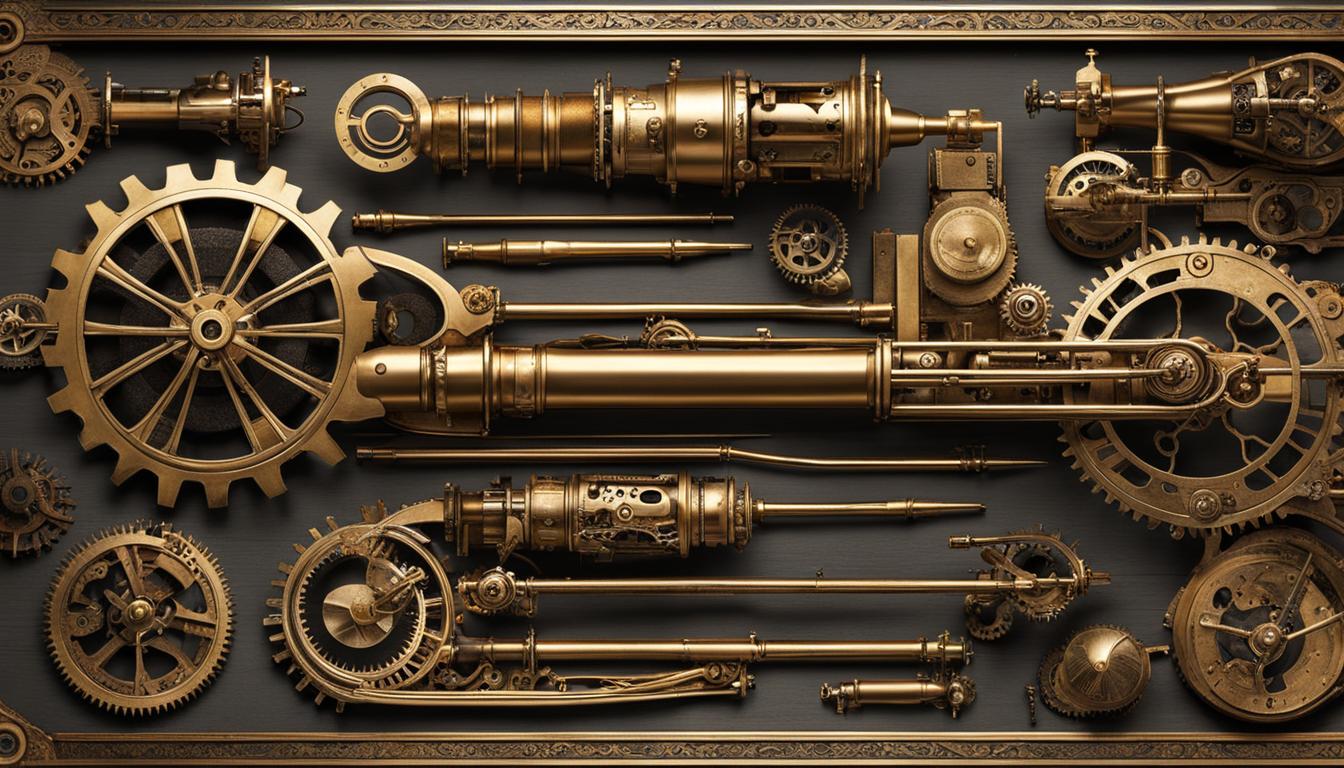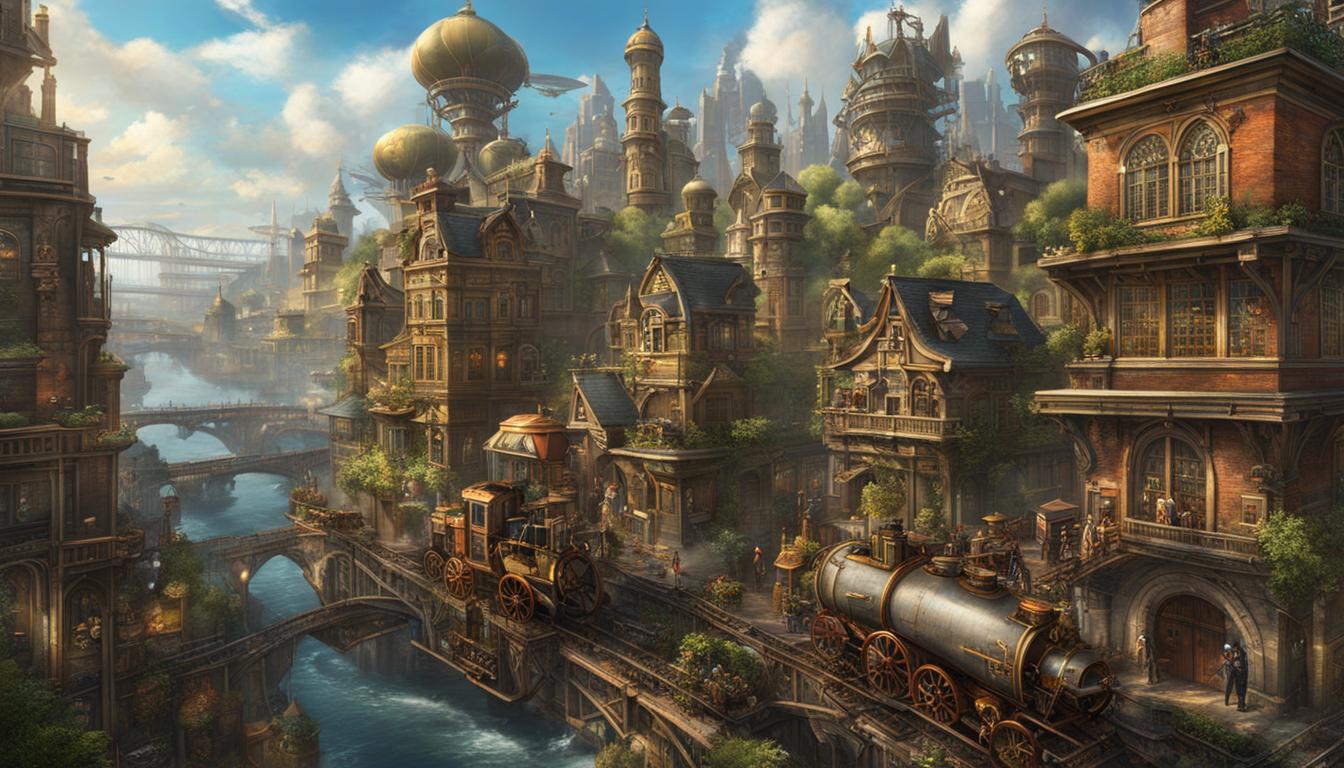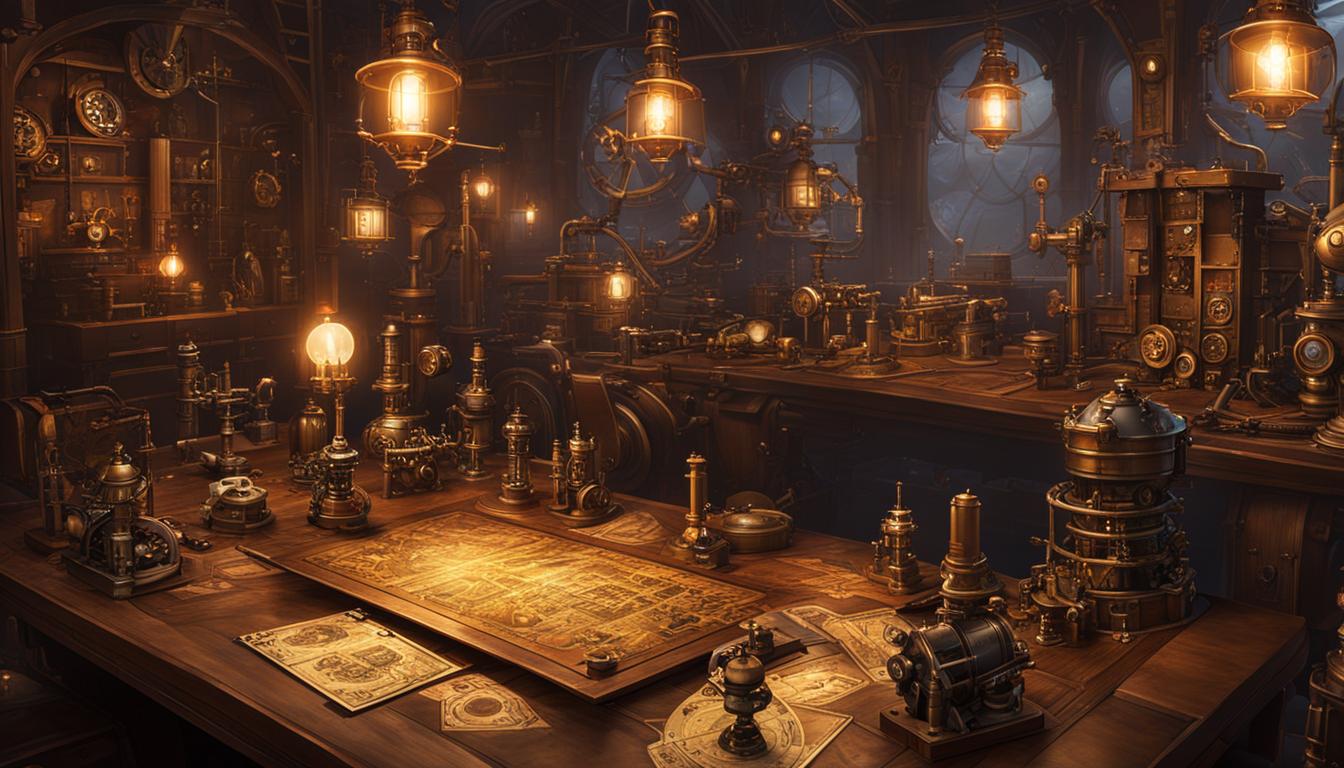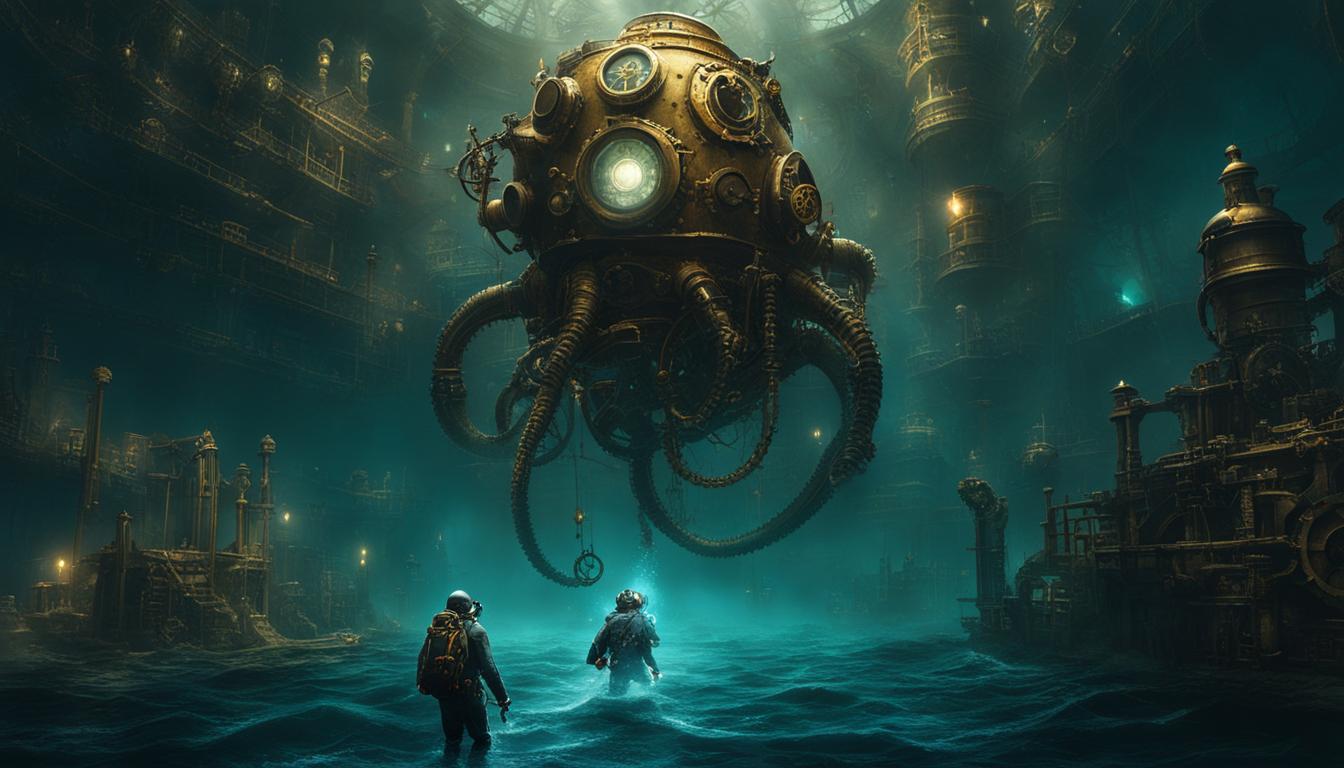Steampunk, a captivating subgenre of speculative fiction, tantalizes readers with its unique blend of technology, fantasy, and history. Imagine a world where steam-powered contraptions coexist with Victorian aesthetics, where gears and goggles reign supreme. But within this fascinating realm, there lies a rich tapestry of subcategories that delve deeper into specific genres of steampunk.
What exactly are these subcategories and how do they enhance our understanding of the steampunk universe? To unravel this mystery, let’s embark on a journey of discovery as we explore the intricate web of steampunk subgenres.
Key Takeaways:
- Steampunk is a subgenre of speculative fiction that combines technology, fantasy, and history.
- Steampunk subgenres vary in themes, settings, and stylistic elements.
- The postmodern and postcolonial influences are evident in steampunk literature.
- Exploring different steampunk subgenres allows for a deeper understanding of the genre’s varied themes.
- Steampunk has evolved over time and made a significant impact on the speculative fiction landscape.
Exploring Different Steampunk Subgenres
Steampunk, as a subgenre of speculative fiction, offers a rich tapestry of themes and settings for enthusiasts to explore. Within the steampunk universe, there are various subgenres that delve into distinct themes and take readers on unique journeys. Let’s dive into some of these captivating subgenres:
Aetherpunk
Aetherpunk, also known as gaslight fantasy, is a subgenre that focuses on the mystical and magical aspects of steampunk. It delves into the manipulation of aether, a fictional substance that powers the technology in the steampunk world. Aetherpunk often combines elements of fantasy and science fiction, immersing readers in a world where magic and advanced technology coexist.
Dieselpunk
Dieselpunk is a subgenre that diverges from the Victorian era and instead embraces the early 20th century, particularly the interwar period of the 1920s to 1950s. It draws inspiration from diesel-powered machinery, Art Deco aesthetics, and the gritty ambiance of noir fiction. Dieselpunk offers a blend of retro-futuristic technology, alternate history, and a dark, dystopian atmosphere.
Steampunk Noir
Steampunk Noir combines steampunk elements with the classic tropes of detective fiction and film noir. This subgenre often takes place in gritty urban settings, featuring morally ambiguous characters, shadowy alleys, and intricate mysteries. Steampunk Noir offers a captivating fusion of technology, crime, and suspense, immersing readers in a world where steam-powered gadgets and dark secrets collide.
| Subgenre | Description |
|---|---|
| Aetherpunk | Focuses on the mystical and magical aspects of steampunk, incorporating aether as a powerful force. |
| Dieselpunk | Embraces the early 20th century, drawing inspiration from diesel-powered machinery and the noir aesthetic. |
| Steampunk Noir | Blends steampunk elements with detective fiction and film noir, featuring morally ambiguous characters and intricate mysteries. |
These are just a few examples of the diverse and exciting subgenres within the world of steampunk. Each subgenre offers a unique blend of themes, settings, and aesthetics, providing readers with endless possibilities to immerse themselves in captivating stories. Whether you prefer the magical allure of aetherpunk, the retro-futuristic world of dieselpunk, or the dark and mysterious atmosphere of steampunk noir, there’s a subgenre that will ignite your imagination and transport you to a world where technology and fantasy collide.
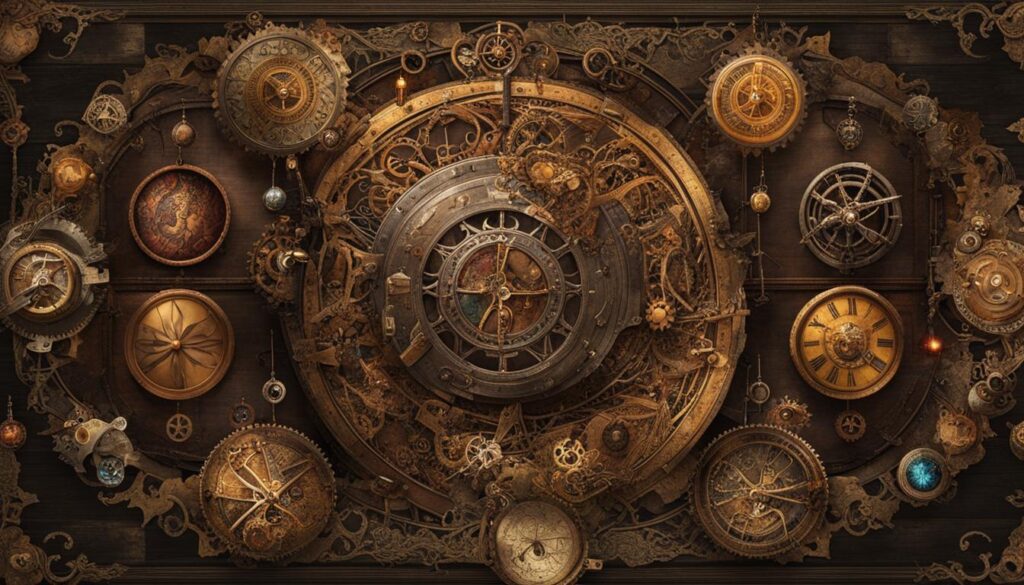
The Evolution and Impact of Steampunk Subgenres
As the steampunk genre has continued to gain popularity, it has undergone an exciting evolution, giving rise to various subgenres that explore niche areas within the steampunk universe. These unique subcategories have distinct themes, settings, and aesthetics that distinguish them from one another.
One notable subgenre is clockworkpunk, which focuses on intricate clockwork mechanisms and the blending of mechanics with human or animal bodies. It delves into themes of transhumanism, exploring the boundaries between man and machine. Clockworkpunk often incorporates fantastical elements, creating a world where technology and fantasy coexist in fascinating ways.
Another intriguing subgenre is gaslight fantasy, which takes place in an alternate Victorian era where magic and supernatural elements play a significant role. In this subcategory, steam-powered technology exists alongside arcane forces, creating a sense of mystery and enchantment. Gaslight fantasy often explores themes of occultism, paranormal phenomena, and the clash between science and magic.
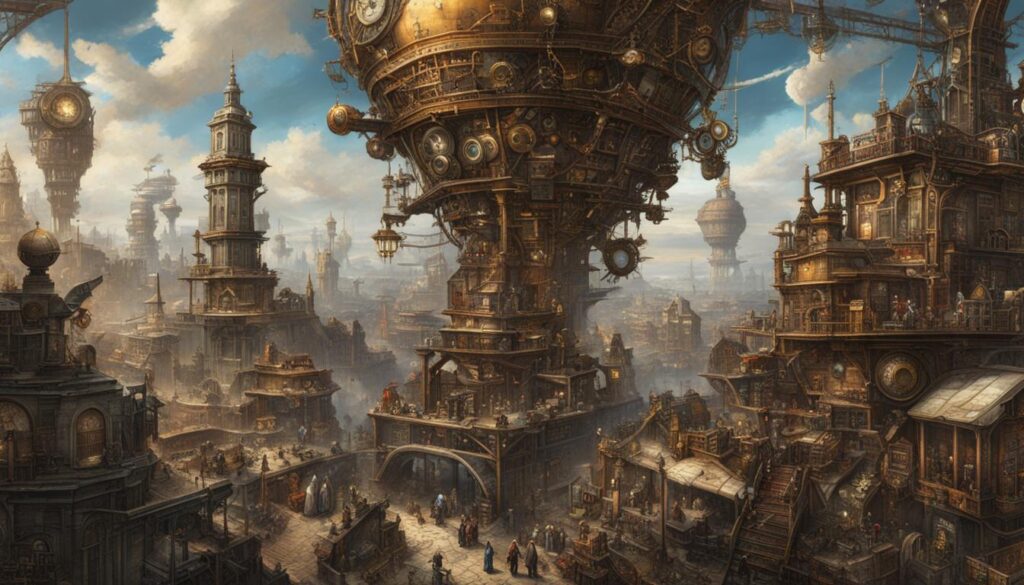
A third subgenre worth mentioning is wild west steampunk, which combines the aesthetics of the American Old West with steampunk technology. This subcategory often explores themes of adventure, exploration, and the clash between tradition and progress. It offers a unique blend of cowboys, steam-powered contraptions, and futuristic gadgets, creating a visually captivating and thematically rich world.
The evolution and growth of these steampunk subgenres have had a significant impact on the speculative fiction landscape. They have allowed authors and artists to delve deeper into specific themes and ideas, pushing the boundaries of the genre and offering readers a diverse range of storytelling options. By exploring niche areas within steampunk, these subgenres have expanded the possibilities within the genre, fostering creativity and imagination.
Conclusion
As the steampunk genre continues to captivate readers and enthusiasts, it is essential to delve into the detailed breakdown of its various subgenres. Steampunk offers a diverse range of themes, settings, and aesthetics that have sparked the imagination of many. From the mesmerizing allure of aetherpunk to the gritty and daring world of dungeon punk, each subgenre within the steampunk universe offers a unique perspective on technology, society, and human nature.
The evolution of steampunk subgenres has pushed the boundaries of speculative fiction, providing new avenues for creativity and exploration. Writers and artists have seized the opportunity to weave intricate tales that combine elements of history, fantasy, and technology, resulting in captivating narratives that transport readers to alternate realities.
By exploring the detailed breakdown of steampunk genres, readers can embark on a journey to explore the vast tapestry of the steampunk universe. Whether it’s the awe-inspiring wonders of biopunk or the desolate beauty of desertpunk, each subgenre offers a distinct experience that adds depth and complexity to the larger steampunk genre. So, grab your goggles, tighten your corsets, and immerse yourself in the world of steampunk, where the possibilities are as limitless as the steam that powers it all.
FAQ
What is steampunk?
Steampunk is a subgenre of speculative fiction that combines elements of technology, fantasy, and history.
How would you define steampunk subgenres?
Steampunk subgenres are specific categories within the broader steampunk genre that explore different themes, settings, and stylistic elements.
What are some notable steampunk subgenres?
Some notable steampunk subgenres include aetherpunk, biopunk, dungeon punk, and desertpunk.
How has steampunk evolved over time?
Steampunk as a genre has evolved over time, giving rise to new subgenres and pushing the boundaries of the genre.
What impact has steampunk subgenres had on speculative fiction?
Steampunk subgenres have had a significant impact on the speculative fiction landscape, providing new avenues for creativity and exploration.
How do steampunk subgenres explore different aspects of technology and society?
Each steampunk subgenre explores different aspects of technology, society, and human nature within the steampunk world.

